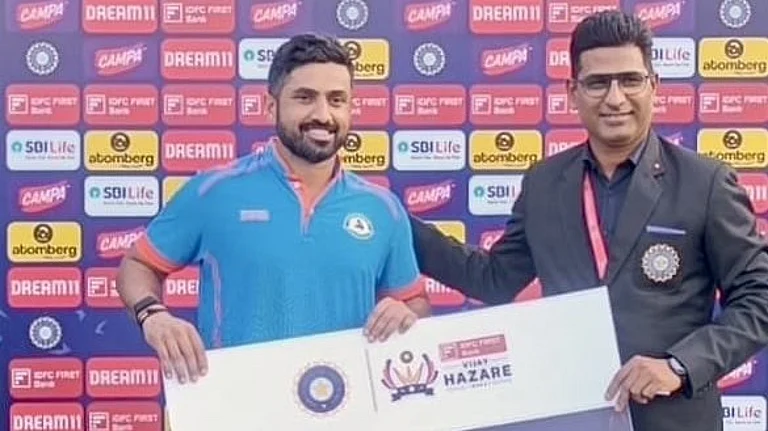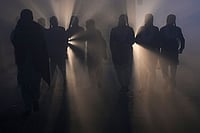Five years hence, the ISB experiment has succeeded. It grabbed headlines this year when one of its students got a dollar job worth Rs 1 crore-plus per annum, a first for any B-School. Three others, including two women, inked contracts for over $200,000 (Rs 90 lakh) each. The school’s deputy dean Ajit Rangnekar downplays the issue: "What we were happy about was that Indian firms were willing to pay global salaries. But one must remember that one swallow doesn’t a summer make. The value of education cannot be measured by starting salaries. Careers grow over time."
What’s more important for ISB is that its model is being replicated by others, including IIMs. Prospective students are choosing it over foreign schools, and it may become the first Indian B-school to get the globally-reputed AACSB accreditation. In fact, ISB hopes to be in the list of the top 20 global B-schools in the near future. "The process will take at least five years. We need to market ourselves better in the US and the UK. But we are getting there," says ISB dean M. Rammohan Rao. It well might be as ISB has been at the forefront of setting new trends. "We are the academic equivalent of what’s happening in the industry," insists Rangnekar. ISB’s one-year course, which was earlier scoffed at by other institutes, is being co-opted by leading schools like IIM-A and ICFAI. "The one-year management programme was pioneered by us. As for others starting similar courses, I can only say imitation is the best form of flattery. But such measures will increase the market size," feels Rao.
Similarly, its Rs 15 lakh fees (for one year) has encouraged others also to make students shell out more. Since ISB students have worked for an average of five years each before they join the course, they have the capacity to pay higher fees. These days students of course have the option of borrowing from banks to finance their education. More importantly, ISB claims it has never turned away an academically deserving student away for lack of funds. "Last year, we enrolled a mill worker’s daughter, whose GMAT score was impressive but who didn’t have the money," says Ragnekar.
ISB’s faculty is different from the IIMs. It has only 22 resident professors and a whopping 100-plus visiting professors from top international schools like Purdue, Berkley, Columbia, Stanford, Kellogg,ISEAD and Wharton. "Our focus has been on research. The visiting professors are researchers. They collaborate with resident faculty in joint research and impart this knowledge to our students. Faculty members are required to produce papers in top academic journals and are under constant review," explains Savita Mahajan, assistant dean, ISB. The teaching faculty is never asked to share administrative duties; there’s an additional staff of 20 looking into placements alone.
Even the students are not the regular MBA aspirants, and include doctors, IAS officers,and those serving with the navy and the army. "We actively look for variety in our students. The old concept of finishing studies, taking up a job and staying in it doesn’tapply anymore. Indians don’t mind taking a year off to study if they know it will add value to their career," explains Rangnekar. Last year, ISB had a medical doctor, HarshSharma, as its student and he went on to join Ernst &Young as a consultant.
Apart from all this, ISB’s state-of-the-art modern campus is a definite draw for most students. "We really don’t realise we are in India. The facilities are world-class," sayNRI students Avinash Mirchandi, who is from Los Angeles, and Meera, from Michigan. The 260-acre campus has air-conditioned residential apartments, gymnasium, swimming pool, tennis courts, basketball, badminton and squash, football field and a jogging track. As a fifth of ISB students are married, they appreciate the facilities all the more.
Governed by a board of leading industrialists like Anil Ambani, Rahul Bajaj, Yogesh Deveshwar, K.V. Kamath, Uday Kotak, Kiran Mazumdar Shaw, Lakshmi Mittal and N.R. Narayana Murthy, ISB was a $50-million project intended to allow Indians to access world-class management education. Associated with top-notch global business schools like Wharton, Kellog and London Business School, it has an instant edge over other Indian B-schools. Says Rao, "We focus on entrepreneurship, which is unique in India. All students are required to study entrepreneurship as part of their course."
Therefore, it isn’t surprising that now Indian students prefer ISB to global institutions. David Wilson, president and CEO, Graduate Management Admission Council (GMAC), which conducts GMAT, says there is a "dramatic shift" in the attitude of the Indian students and which schools they’re sending their scores to. In 2001, most Indians sent them to Harvard, followed by University of Pennsylvania, Stanford, Northwestern University and ISB. In 2005, the order changed with the largest number of Indians sending them to ISB, followed by Harvard, Stanford, Pennsylvania and Northwestern.
Within ISB itself, GMAT scores of students have gone up in the recent past. In the first three years of its existence, the average score was 690; now it is up to 706.NRIs, who earlier looked at the US universities for admissions, feel that ISB is a more economically attractive option. While the fee at ISB amounts to $30,000, it’s upwards of $100,000 in Harvard. In addition, ISB offers quality education that’s comparable to many global schools. While most schools take a decade to "get there", ISB seems to have made its name, both domestically and globally, in just five years. The corporate sector has also realised that ISB offers a specific talent pool that it can tap into. "The fact is that ISB’s credibility is going up because it has delivered. Our students stand out because they strike a perfect balance between global and local requirements. They don’t merely follow trends, but have the courage to stand out with new vision," feels Rangnekar.
Nothing exemplifies this better than this year’s placement trends. According to ISB’s website, "more than 30 students at the ISB have declined high salary packages in their quest for taking up jobs that find the ‘best fit’ for them. Many students declined lucrative offers and chose better job profiles. This is a demonstration of the economic confidence that Indians are beginning to feel."

























